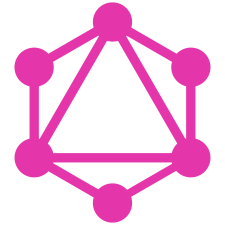GraphQL
 | |
| Developer(s) | Facebook, and community |
|---|---|
| Initial release | September 14, 2015 |
| Stable release | June 2018[1]
|
| Repository | github |
| Written in | Implementations in Java, JavaScript, Ruby, Scala, others. |
| Operating system | Cross-platform |
| Website | graphql |
GraphQL is an open-source data query and manipulation language for APIs, and a runtime for fulfilling queries with existing data.[2] GraphQL was developed internally by Facebook in 2012 before being publicly released in 2015.[3] On 7 November 2018, the GraphQL project was moved from Facebook to the newly established GraphQL Foundation, hosted by the non-profit Linux Foundation.[4][5] Since 2012, GraphQL's rise has followed the adoption timeline as set out by Lee Byron, GraphQL's creator, with accuracy.[6] Byron's goal is to make GraphQL omnipresent across web platforms.
It provides an approach to developing web APIs and has been compared and contrasted with REST and other web service architectures. It allows clients to define the structure of the data required, and the same structure of the data is returned from the server, therefore preventing excessively large amounts of data from being returned, but this has implications for how effective web caching of query results can be. The flexibility and richness of the query language also adds complexity that may not be worthwhile for simple APIs.[7][8][9] Despite the name, GraphQL does not provide the richness of graph operations that one might find in a full-fledged graph database such as Neo4j, or even in dialects of SQL that support transitive closure. For example, a GraphQL interface that reports the parents of an individual cannot return, in a single query, the set of all their ancestors.
GraphQL consists of a type system, query language and execution semantics, static validation, and type introspection. It supports reading, writing (mutating), and subscribing to changes to data (realtime updates – most commonly implemented using Websockets).[10] GraphQL servers are available for multiple languages, including Haskell,[11] JavaScript,[12] Perl,[13] Python,[14] Ruby, Java, C++,[15] C#, Scala, Go, Rust, Elixir,[16] Erlang, PHP, R, D[17] and Clojure.
On 9 February 2018, the GraphQL Schema Definition Language (SDL) became part of the specification.[18]
Example[]
POST request:
{
orders {
id
productsList {
product {
name
price
}
quantity
}
totalAmount
}
}
Response:
{
"data": {
"orders": [
{
"id": 1,
"productsList": [
{
"product": {
"name": "orange",
"price": 1.5
},
"quantity": 100
}
],
"totalAmount": 150
}
]
}
}
See also[]
References[]
- ^ "GraphQL June 2018 Release Notes". Retrieved 26 March 2019.
- ^ "GraphQL: A query language for APIs".
- ^ "GraphQL: A data query language". 14 September 2015.
- ^ "Facebook's GraphQL gets its own open-source foundation". TechCrunch. Retrieved 7 November 2018.
- ^ "The Linux Foundation Announces Intent to Form New Foundation to Support GraphQL - The Linux Foundation". The Linux Foundation. 6 November 2018. Retrieved 7 November 2018.
- ^ Anthony, Art (8 March 2018). "Is GraphQL Moving Toward Ubiquity?". NordicAPIs.
- ^ "GraphQL vs REST: Overview". Phil Sturgeon. Retrieved 25 November 2018.
- ^ "Why use GraphQL, good and bad reasons". Honest Engineering. 4 August 2018. Retrieved 26 November 2018.
- ^ "GraphQL Fundamentals". Howto GraphQL. Retrieved 4 July 2018.
- ^ "GraphQL". facebook.github.io. Facebook. Archived from the original on 18 July 2018. Retrieved 4 July 2018.
- ^ "Hasura – Instant Realtime GraphQL on Postgres". Hasura. Retrieved 24 October 2019.
- ^ "GraphQL js". 16 October 2021.
- ^ "GraphQL - Perl implementation of GraphQL".
- ^ "Graphene". graphene-python.org. Retrieved 18 June 2017.
- ^ graphql/libgraphqlparser, GraphQL, 27 May 2020, retrieved 30 May 2020
- ^ "Absinthe: The GraphQL toolkit for Elixir". Retrieved 19 July 2018.
- ^ "Package graphqld on DUB".
- ^ "GraphQL SDL included in Github repository".
External links[]
- Query languages
- Data modeling languages
- Software stubs